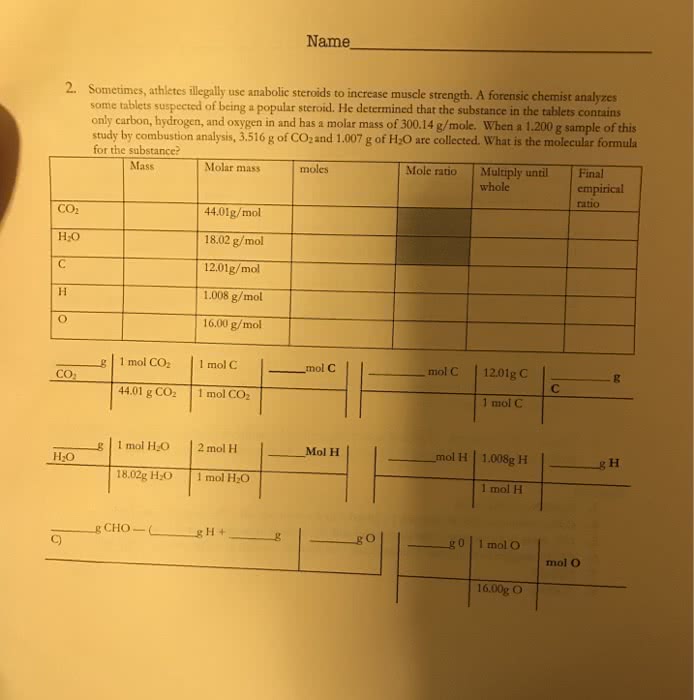CHEM 023 Lecture Notes - Lecture 18: Chlorine, Sodium Chloride, Molar Mass
Document Summary
Calculating empirical formula from mass % values rather than actual gram amounts: A compound contains mass %s of constituent elements as follows: carbon: 20. 0, hydrogen: 2. 2, chlorine: 77. 8% Mole ratio (whole #) (multiply by 3 to get to nearest whole integer) Assume 100g of compound, the mass % is automatically converted to gram masses: If we have 100g of the compound, the following masses are evident: carbon: 20. 0g, hydrogen: 2. 2g, chlorine: 7. 7g. A deviation of (cid:1004). (cid:1005) fro(cid:373) a(cid:374) i(cid:374)teger (cid:272)a(cid:374) (cid:271)e attri(cid:271)uted to (cid:862)hu(cid:373)a(cid:374) error(cid:863) i(cid:374) empirical formula calculations. Any value over 0. 1 away from an integer requires additional manipulation and is (cid:374)ot the result of (cid:862)hu(cid:373)a(cid:374) error(cid:863) Need additional information: molar mass of the compound, molecular formula= (empirical formula) (n, (n)= molar mass of compound molar mass empirical formula. The empirical formula of naphthalene is c5h4, and its molar mass is. Formulation of a solid in a previously clear solution.


